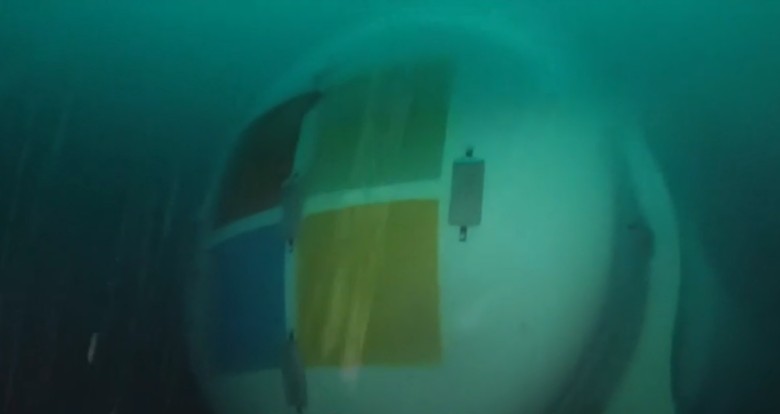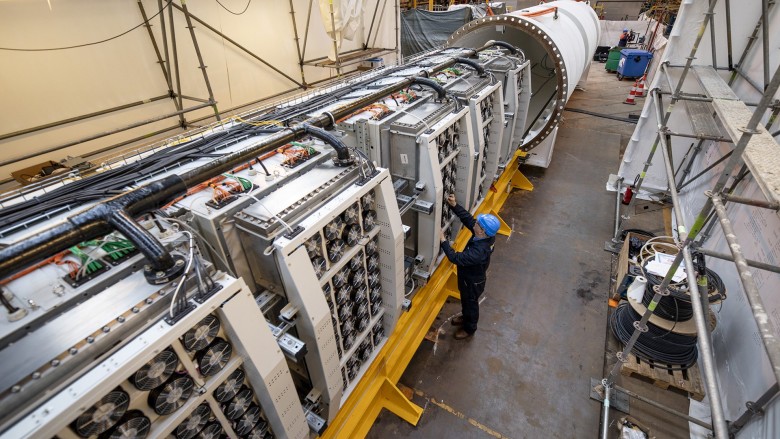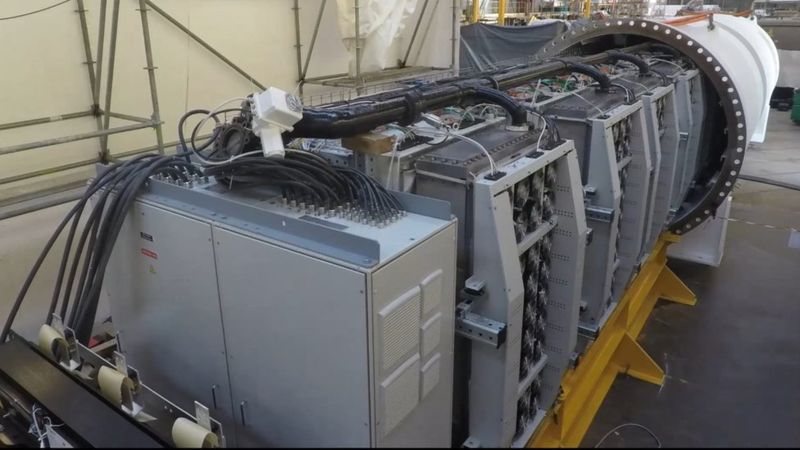
Microsoft's
Natick data center
successfully dived to the seabed near the Orkney Islands (Scotland) in the North Sea. At a depth of 35.7 meters, it will work for five years, transmitting data via the fiber-optic channel to the shore, if nothing breaks.
The main idea of underwater data centers is to save on cooling and renting land. Mainly on cooling. Data centers consume a huge amount of electricity (420 terawatts, that is,
almost 3.5% of world energy consumption comes from data centers), and 15-20% of this energy is spent on computer cooling.
Theoretically, in the cold waters of the North Sea, you can save a lot. Experiments have shown that heat is effectively transferred to the case of the data center and is dispersed in the ocean.
An additional advantage is the lack of human staff in data centers. Air with water vapor and harmful oxygen in the server is replaced with dry nitrogen. Due to this, corrosion and wear of metal parts are significantly reduced - a known problem in data centers.

Of course, in such conditions it is impossible to replace the failed equipment, but the project initiators hope that the operating conditions themselves contribute to reducing the number of failures and equipment failures.
 Engineers install Microsoft server racks and cooling infrastructure in the Natick project Northern Isles data center at the Naval Group site in Brest, France. The data center roughly corresponds to the size of the ISO ship container with a length of 12 m. Photo: Frank Betermin
Engineers install Microsoft server racks and cooling infrastructure in the Natick project Northern Isles data center at the Naval Group site in Brest, France. The data center roughly corresponds to the size of the ISO ship container with a length of 12 m. Photo: Frank BeterminA submerged capsule is just a tiny copy of this data center. In a 12-meter container only 12 racks, 864 servers and a cooling system. But you need to understand that this is a
modular data center. On the seabed, it is relatively easy to couple containers together like space modules on the ISS. As a result, long “sausages” with almost unlimited scalability are formed.
 Servers are loaded into a sealed underwater capsule
Servers are loaded into a sealed underwater capsuleThe first underwater experiment with a Microsoft data center was conducted in 2015: then a container called Leona Philpot was
flooded for 5 months . If the current Project Natick experiment proves its success, then in the next stage, Microsoft plans to sink groups of five modules. At the same time, the ability to deploy data centers in the sea within 90 days will be verified.

This experiment was conducted in collaboration with several companies. French Naval Group has built and equipped sealed containers. After checking all the systems, the data center was loaded onto a truck and transported from France to Scotland, where it was attached to a triangular base filled with ballast for deployment on the seabed. Another partner of the European Marine Energy Center (EMEC) helped lay the cables and connect the data center to the coastal hubs. EMEC has experience in similar work: it specializes in laying underwater cables for connecting offshore wind power plants and other facilities ...

Consumption of electricity by data centers has been growing for a dozen years. Now it is approaching 3.5% of world energy consumption, and some experts
predict that it may grow to 20% or even more in the coming decades. But experts hope that Moore's law here will play into our hands in the sense that the power consumption of processors based on one transistor will continue to decrease.
Microsoft believes that the placement of data centers on the seabed is also preferable from the point of view of logistics, because more than 50% of the world's population lives off the coast (closer than 200 km).
However, one can argue about logistics, because 90% of European data centers are now located near or inside major cities: in London, Frankfurt and other major global traffic exchange points. So, it is unlikely that logistics will greatly improve from moving servers to the sea.
Some environmentalists have expressed concern that the underwater location of data centers will lead to an increase in the temperature of the oceans. But approximate calculations in the mind say that the water temperature at a depth of several meters will rise by no more than thousandths of a degree.